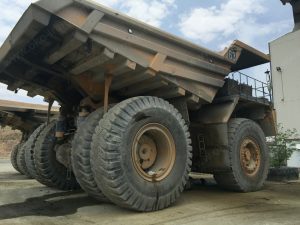Why On Earth (or in the air) do you need Nitrogen in commercial tyres?
Typical Mining Vehicle – with OKO: and N2?
You may have been encouraged by your tyre bay to invest in having them replace the natural air in the tyres of your heavy-duty OTR or On Road vehicle fleet with more or less pure nitrogen (N2).
Why? Well, the blurb put out by the suppliers claims that –
- N2 has a larger molecular size than the earth’s air, therefore it leaks out of naturally porous tyres more slowly
- This keeps the tyres at the right pressure for longer
- The lack of water moisture in the tyre prevents ‘tyre rot’
- The drier gas avoids wheel rim corrosion
These statements are all, to some degree, true: but do they justify the cost and hassle? Let’s look at the facts in more detail.
A commercial tyre, filled with N2, saves only around 5% of pressure loss compared with good old-fashioned air. You will only see that marginal benefit if you don’t regularly check and top up your pressures at a filling station or at your own workshop, which is, frankly, bad practice.
And, don’t forget, you can’t fill up with nitrogen just anywhere – it means a return trip to your specialist tyre bay, at a significant cost. Start topping up from a normal air line, and any advantage will soon be eroded to little or nothing. Note also that N2 is not ‘fit and forget’: suppliers advise you to check your pressures and pay for top-ups every few months.
The air that we breathe already has 78% N2, This is why the statistical benefits of ‘100%’(actually around 93% in most installations) are much less than are often claimed.
N2 is dry: but tyre rot is not a common occurrence in industrial/commercial tyres that see regular use.
Most modern wheels are coated for protection and should not suffer any corrosion issues.
The biggest cause of premature tyre wear-out is heat. The friction generated in moving tyres increases the heat of the gas inside the tyre. Inadequately inflated tyres get hotter, faster. This is a big issue, particularly for large commercial, agricultural and industrial tyres.
Is there an alternative for these vehicles? Yes – to fit OKO Tyre Sealant.
Independent tests on truck and off road tyres show a 20% average improvement in tyre life from having OKO coating the inside of the tread (and up to 40% in the steer tyres that suffer far more from the scrubbing effect when turning), because:
- The liquid draws away heat from the rubber in the tread (where the friction with the ground occurs) – lowering the operating temperature, by over 11% in a matched test with tyre temperature sensors;
- OKO also prevents air loss from the ever-flexing tyre tread area;
- The sealant conditions the tread material, slowing down the hardening/stiffening of the rubber as it ages.
All these three great benefits are in addition to the primary ability of OKO; to seal multiple tread-area punctures permanently, thus further extending the working life of the tyres.
Still worried about the 1% moisture in regular trapped air? Then make sure that you always top up your air with a commercial compressor fitted with a moisture trap in its air hose. Never let your technicians disable this essential aid to greater tyre longevity. Invest in one if you don’t currently have it. Note also that OKO contains corrosion inhibitors.
For the biggest, thickest, most expensive tyres in mining and construction (like the one pictured), OKO LifeLong is the recommended solution. It is not an anti-puncture sealant (these tyres do not suffer many flats). Instead, it is a free-flowing tyre and wheel rim conditioner liquid that lays down a lasting, corrosion-protection nanotechnology layer on static and moving rims, it makes tyre mounting easier, and actually increases tyre life by 30% on average: compare this with a specialist N2 supplier’s figure –
“Based on many years’ experience and customer feedback, we conservatively estimate that nitrogen tyre inflation extends OTR tyre life by at least 10%” (NitraLife, commenting in Mining Weekly on mining tyre experience).
Can you use OKO with N2? Yes, certainly, they are compatible and you can invest in them both for maximised tyre life: but preferably fit OKO first, then the nitrogen – that way there is no risk of losing some of the precious N2 and having to top up the gas (again)…

